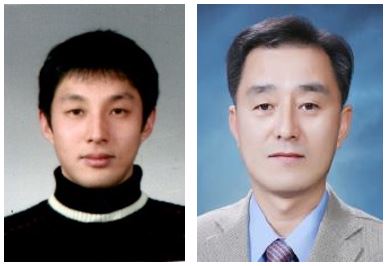- About
- Academics
-
Undergraduate Programs
- Civil and Environmental Engineering
- Architecture and Architectural Engineering
- Mechanical Engineering
- Industrial Engineering
- Energy Resources Engineering
- Nuclear Engineering
- Materials Science and Engineering
- Electrical and Computer Engineering
- Naval Architecture and Ocean Engineering
- Computer Science and Engineering
- Aerospace Engineering
- Chemical and Biological Engineering
-
Graduate Programs
- Civil and Environmental Engineering
- Architecture and Architectural Engineering
- Mechanical Engineering
- Industrial Engineering
- Energy Systems Engineering
- Materials Science and Engineering
- Electrical and Computer Engineering
- Naval Architecture and Ocean Engineering
- Computer Science and Engineering
- Chemical and Biological Engineering
- Aerospace Engineering
- Interdisciplinary Program in Technology, Management, Economics and Policy
- Interdisciplinary Program in Urban Design
- Interdisciplinary Program in Bioengineering
- Interdisciplinary Program in Artificial Intelligence
- Interdisciplinary Program in Intelligent Space and Aerospace Systems
- Chemical Convergence for Energy and Environment Major
- Multiscale Mechanics Design Major
- Hybrid Materials Major
- Double Major Program
- Open Programs
-
Undergraduate Programs
- Research
- Campus Life
- Communication
- Prospective Students
- International Office
SNU Professor Kim Soo-Hwan transferred core technology of analog-digital converter to domestic fabless specialty company.
-
Uploaded by
관리자
-
Upload Date
2018.02.28
-
Views
800
SNU Professor Kim Soo-Hwan transferred core technology of analog-digital converter to domestic fabless specialty company.

▲ SNU professor Kim Soo-Hwan
SNU College of Engineering (Dean Cha Kook-Heon) has announced that Department of Electrical & Computer Engineering Professor Kim Soo-Hwan’s team has developed core technology of high resolution analogue-digital converter, which is a core technology of IoT device and transferred the technology to the domestic fabless specialty company.
This technology is the core technology of IoT devices that only a few global corporations have been monopolizing worldwide. Korea has been trying to develop it for the last 10 years, but was unsuccessful, and completely depended on imports. Now Professor Kim’s team has succeeded not only in developing, but also commercializing, by transferring the technology to ABOV Semiconductor, a fabless specialty company.
The 24-bit sigma-delta analog-digital converter (ADC) with high resolution and low power is a technology for acquiring sensor data on IoT devices and converting the analog data collected by sensors into digital data.
The commercialized ADC supports multi-channel inputs by incorporating a programmable Gain Amplifier (PGA) that can amplify signals up to 128 times while reducing power consumption to 1.008mW, and is evaluated to have world-level competitiveness. It can be applied to various areas like precise electronic scales, medical healthcare devices, and sensor ROICs.
Professor Kim Soo-Hwan said, "The ADC developed by this research is a good example of successful commercialization of the research result of the university without staying just as a thesis. It can be applied to IoT related electronic devices which require precise data processing."
Professor Kim Soo-hwan received a Bachelor's degree and a Master's degree from Korea University’s School of Electrical Engineering, and worked as a researcher at LG Electronics and earned a Ph.D. from the University of Michigan, USA. Since then, he has been working as a researcher at the IBM Thomas J. Watson Research Center in the United States, and took office at SNU Department of Electrical & Computer Engineering since 2004.
They plan to announce the technology at the world’s top-level semiconductor society next February.